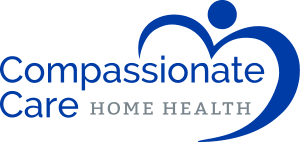Are you concerned about diabetes? You are not alone. Diabetes is the fifth deadliest disease in the United States, affecting more than 20 million Americans. If you want to learn about the signs of diabetes or get more information on how to manage diabetes for you or your loved one, read the information below.
What is Diabetes?
Everyone must fuel their bodies with food for energy, strength, and even to live. The food we consume is broken down into glucose because that is the form of fuel every cell of our bodies can use. However, without insulin that glucose cannot get to our muscles and other cells where it is needed.
Insulin is a naturally occurring substance that is made in the pancreas. Without this insulin, the glucose (sugar) would build up in our blood streams and not feed our muscles and other cells.
When a person has diabetes, the insulin process is interrupted. This causes the glucose levels in the blood stream to be higher than they should be. Our blood vessels are not intended to cope with these higher glucose levels and can become severely damaged. This damage to the blood vessels may lead to heart attack, stroke, blindness, amputation, or kidney failure.
Types of Diabetes
There are 3 primary types of diabetes:
- Type 1 Diabetes (formerly known as Juvenile Diabetes): Occurs when the body fails to produce insulin. Of all Americans diagnosed with Diabetes, between 5 and 10% have Type 1 Diabetes.
- Type 2 Diabetes: 90% of people with diabetes have Type 2 diabetes. This is the type that most often affects older adults with 18% of people over the age of 65 are diagnosed with Type 2. Some people with Type 2 Diabetes have no symptoms at all.
- Gestational Diabetes: Occurs in some women during pregnancy, but is resolved once the infant is born. However, approximately 10% of women who have Gestational Diabetes will develop Type 2 Diabetes later on in life.
The Warning Signs of Type 2 Diabetes
If you’re concerned that you might have diabetes, below is a list of warning signs to help you determine if you should go to a doctor to get tested.
- Frequent infections
- Tingling or numbness of the hands or feet
- Unusual thirst or hunger
- Cuts or bruises that are slow to heal
- Frequent urination
- Fatigue and/or irritability
- Blurred vision
Who is at Greater Risk for Type 2 Diabetes?
- People over age 45
- People with a family history of diabetes
- People who are overweight
- People who do not exercise regularly
- People with low HDL cholesterol, high triglycerides, or high blood pressure
- Women who had gestational diabetes or who have given birth to a baby weighing 9+ pounds
Diabetes Management
Some people with Type 2 diabetes must take insulin injections every day, while others are managed with oral medications. The goal for anyone trying to manage diabetes is to control the level of glucose (sugar) in their blood, maintaining a healthy level.
- An ideal blood sugar level is around 70-120.
- When a person’s blood sugar level drops below 70 (hypoglycemia) they may have symptoms like sweating, shakiness, weakness, hunger, nervousness, or confusion. If the blood sugar level drops too far, the person can die. As long as the person is fully conscious low blood sugar may be treated by taking food and fluids that will bring the sugar level back up. Call 911 or your physician if you are unable to maintain a healthy blood sugar level.
- When the blood sugar level rises above 240 (hyperglycemia) the person may become tired, nauseated or confused. If the blood sugar rises too far they may go into a coma and die. Call 911 or your physician if you are unable to maintain a healthy blood sugar level.
For more information, contact the American Diabetes Association at 1-800-DIABETES (1-800-342-2383) or visit their website at www.diabetes.org.
If you need a caregiver in your home to assist diabetic patients with insulin injections and blood sugar checks, request a free consultation.
